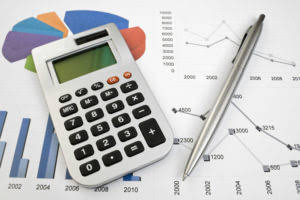
These ongoing expenses can add up and impact the profitability of the investment. For example, if a factory reaches capacity, renting additional space or purchasing new machinery may be necessary. Bakery Accounting Administrative costs, such as higher insurance premiums or expanded quality control measures, may also increase. Tracking these expenses ensures that additional revenue from higher production offsets rising overhead. Understand how incremental cost affects business decisions by influencing resource allocation, pricing strategies, and overall financial planning.

Perfect Competition: Real Examples in USA, Canada, World
- Incremental analysis is useful when a company works on its business strategies, including the decision to self-produce or outsource a process, job, or function.
- There is a need to prepare a spreadsheet that tracks costs and production output.
- However, care must be exercised as allocation of fixed costs to total cost decreases as additional units are produced.
- Initially, as output increases, the business becomes more efficient at using its resources.
- Thus, the above are some benefits that the procedure of marginal cost analysis contributes to the entire manufacturing process.
Depreciation schedules, investment tax credits, and deductions influence overall cost efficiency. Tax Cuts and Jobs Act (TCJA), businesses benefit from 100% bonus depreciation on qualified property, reducing taxable income in the year of purchase. Section 179 expensing provides additional flexibility for smaller firms, allowing immediate deduction of asset purchases retained earnings up to a specified limit. Understanding these provisions helps companies optimize after-tax returns while maintaining compliance with IRS regulations.

Related Terms
External factors, including fluctuating raw material prices or regulatory changes, can alter cost structures unpredictably. Data limitations, such as incomplete or outdated information, can also lead to errors. Implementing robust data collection and analysis systems, like enterprise resource planning (ERP) software, can address these challenges. Despite the difficulties, understanding incremental manufacturing cost is vital for effective financial management and strategic planning. Incremental cost of capital is related to composite cost of capital, which is a company’s cost to borrow money given the proportional amounts of each type of debt and equity a company has taken on. Composite cost of capital may also be known as weighted average cost of capital.
What Do Incremental Costs Include?
The content on MBA Skool has been created for educational & academic purpose only. Say goodbye to baseline cost, because we’re subtracting it like a bad habit. Shaun Conrad is a Certified Public Accountant and CPA exam expert with a passion for teaching. After almost a decade of experience in public accounting, he created MyAccountingCourse.com to help people learn accounting & finance, pass the CPA exam, and start their career.

How to Calculate Incremental Costs Step-by-Step
- These include direct costs such as materials and labor, as well as indirect costs that rise with higher production levels.
- Bulk discounts may reduce per-unit costs, but material waste or defects can offset savings.
- In other words, incremental costs are solely dependent on production volume.
- Like in the above example, it is evident that the per-unit cost of manufacturing the products has decreased from ₹ 20 to ₹ 17.5 after introducing the new product line.
- It is usually made up of variable costs, which change in line with the volume of production.
- The moment one extra unit produced does not generate the required return, the business needs to modify its production process.
For pricing, it helps determine the minimum price at which additional units can be sold profitably. Companies launching new products or adjusting prices to stay competitive rely on incremental cost data to ensure profitability. In other words, incremental costs are solely dependent on production volume. Conversely, fixed costs, such as rent and overhead, are omitted from incremental cost analysis because these costs typically don’t change with production volumes.
Related terms:

For instance, if a bakery produces 500 loaves of bread, the cost of flour, yeast, and packaging will rise compared to producing only 200 loaves. Variable costs are crucial for break-even analysis, which helps businesses determine the minimum sales volume needed to cover expenses. While incremental cost focuses on the additional expense of a specific decision, variable cost applies to all production levels and is used in cost-volume-profit (CVP) analysis. From the above information, we see that the incremental cost of manufacturing the additional 2,000 units (10,000 vs. 8,000) is $40,000 ($360,000 vs. $320,000).

How do you calculate incremental costs? ›
Procuring higher volumes of materials may strain supplier relationships, leading to renegotiated contracts or delays. Transportation costs may increase due to expedited shipping or additional warehousing needs. The basic method of allocation of incremental cost in economics is to assign a primary user and the additional or incremental user of the total cost. To give incremental cost you an idea of how knowing your incremental and marginal cost leads to better financial planning, let’s get back to the shirt business example. In the real world, decision-makers don’t consider Marginal Cost in isolation.